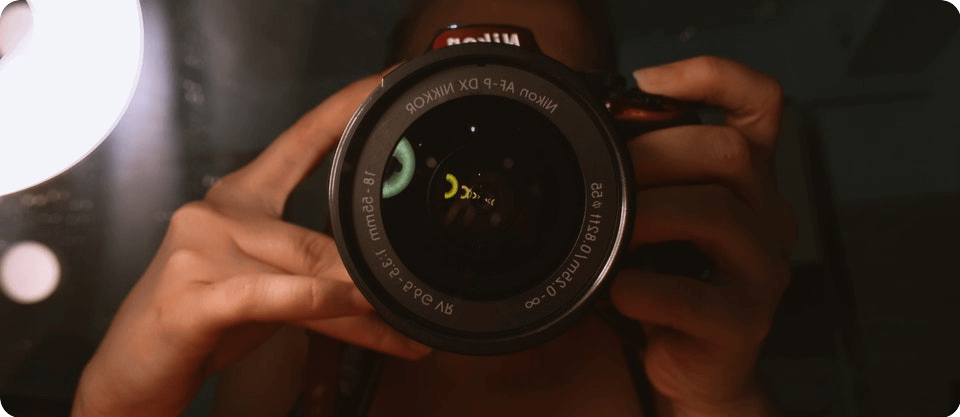
What are the 4 camera modes?
You could be forgiven for being a little confused by the title of this article, you are probably thinking ‘my camera has far more than just four modes’. That is certainly true. However, of these modes, there are four that offer more control than a large number of automated modes present on most cameras. These four modes are:
- Program – appears as P
- A/AV – will change depending on the camera brand
- S/TV – will change depending on the camera brand
- Manual – appears as M
Only one of these modes offers full control – fully manual mode – and it is this mode that most photographers will aim to master. However, that does not mean that the other modes do not have their uses, and in some cases, even professionals will rely on them in situations where speed is important or simply for convenience.
What are the modes of a DSLR?
These four modes are found on Mirrorless cameras and DSLRs alike. They are more or less universal on interchangeable lens cameras. You will find these modes on Bridge cameras too but in a more limited capacity.
Other modes you are likely to find on DSLRs, such as Macro, Landscape, and Portrait, are simply predetermined settings that the camera chooses for these types of scenes and offer next to no control.
The main thing that any of these automated modes want to achieve is the correct exposure. They do not regard your artistic vision for the scene. This is why utilising these other four modes is vital to progressing your photography skills. One important thing to note before we go any further is that P, A/AV, and S/TV are all semi-auto modes, meaning the camera still controls some of the exposure.
However, you can use exposure compensation to further adjust the exposure – either over or under exposed – if needed. In fully Manual mode you have complete control over all exposure settings.
What does P mean?
Let’s start with the first mode you should explore. P stands for program mode. This mode can be a little confusing, to begin with, but I sometimes like to think of it as the professional’s automatic mode.
I say this because P mode is still largely automated. When you set the dial to this mode and begin to take a picture, this mode will work out your aperture and shutter speed settings to give you the correct exposure.
But say for example you want to photograph a scene with a shallow depth of field, and the P mode is giving you a high aperture value. Well, you can adjust the aperture to open more to achieve that depth of field. What the camera will do is adjust the shutter speed to compensate for the exposure, to ensure the scene is correctly exposed.
You can also do this for shutter speeds, and in this case, the P mode will adjust the aperture. In this sense, it is like having both the aperture priority and shutter priority rolled into one mode. This mode is good for general use where you are not reliant on either aperture or shutter speed to get a particular visual effect. But this mode does become somewhat redundant when you start using fully manual. And if you are looking to just change the aperture or shutter speed on their own, you should use either of the priority modes.
What is S/TV mode?
S stands for the shutter. TV stands for time value. These are the same thing but differ from brand to brand.
The shutter in your camera controls the amount of time that the sensor is exposed to light. This is known as the shutter speed. The longer the shutter is open, the more motion and movement that is captured, meaning blurred photos. The shorter the shutter is open, the more frozen and static the photo is. Shutter speed also controls one aspect of exposure. Longer shutter speeds mean more light, and shorter shutter speeds mean less light.
In the S/TV mode, you have control over only the shutter speed. The camera will handle the rest of the settings. This is known as shutter priority. This means that this mode is great for practising with different shutter speeds to see the different visual effects. A simple exercise is to find running water, such as a fountain, and photograph it using different shutter speeds via the S/TV mode.
A tripod is recommended for this to avoid camera shake at longer shutter speeds. What you will see as you move through the different speeds from fast to slow, is how the water goes from pin-sharp and frozen in time, to blurry and smooth with longer speeds. This is the effect of the shutter speed. However, at longer shutter speeds, you will also begin to see that the photo may become over-exposed. This is because to keep the exposure correct, the camera has to change the aperture and eventually will run out of changes it can make. To get very long exposures in daylight you will need a Neutral Density filter, but that is for another article.
A/AV
This mode is Aperture priority (or aperture value) and performs in the same way as shutter priority except you are controlling the aperture and the camera controls the rest of the exposure.
This mode is very popular among portrait and wedding photographers as shallow and deep depths of fields are required for portraits and group photos, with a shutter speed less of a consideration. Although you still need to keep an eye out for a camera shake.
The amount of control you have here will also depend on your lens. Not all lenses have the same aperture range. This means that you might have your aperture open as wide as possible to let in light and are still getting an underexposed photo. In this case, you can use exposure compensation or change the ISO to give you more light or use a flash.
Remember, with apertures, the numbers are known as f-stops. The lower the f-stop number, the wider the aperture and the shallower the depth of field. The higher the f-stop number, the tighter the aperture and the deeper the depth of field. Again, this mode is great for practice with depth of field, and apertures can be tricky to understand if you are a beginner.
A simple exercise, set up a still life, a bowl of fruit with something in the background. Some nice lights perhaps. Then take a photo on each aperture setting to see how the light in the background changes. This will help to give you a very clear understanding of how apertures change the depth of field.
Manual mode
This mode is the mode that all photographers strive to master, and for good reason. With this mode, you have total control over both the technical and creative aspects of your photography.
However, it does come at a cost because you have to learn how to use your camera correctly, or to be more accurate, how exposure works. To achieve correct exposure, you need to balance light, time, and sensitivity to light together.
That is your aperture, your shutter speed, and ISO. Notice how ISO does not have its priority mode. That is because traditionally photographers try to get the correct exposure using apertures and shutter speeds. But ISO does still have a role to play which we will come to presently.
First of all, to be able to use manual mode, you have to be able to locate and read the light metre. The light metre is the device in the camera that reads and measures light and makes its adjustments based on the information it receives.
In manual mode, we make these adjustments ourselves. The light metre is located in the view finder, usually in the bottom middle, flanked by the shutter speed and f-stop number. It appears as vertical lines spread out horizontally, with a little indicator below them. There are also numbers ranging from -2 to +2, with a 0 in the middle. Some cameras will have -3 to +3, some go even farther than this but the principle is the same. Anytime the indicator is less than 0, the photo will be underexposed. If the indicator is above 0, the photo is overexposed. When the indicator is at 0 or in the middle this will be the correct exposure. You get the correct exposure by adjusting the shutter speed, aperture, or ISO.
Sometimes you will adjust only 1, other times you will adjust all 3! It will depend on what settings you want to maintain and what you can change. For example, say you want to have a deep depth of field for a landscape photo. In this case, you can change the aperture to a high f-stop value. This will mean that you have to use a slower shutter speed to get the correct amount of light. But maybe you want to also have a fast shutter speed as well as a high f-stop number. To keep the exposure correct you will change the ISO, which controls the camera’s sensitivity to light. Your settings are determined by how much light is available.
Manual mode is all about compromise and understanding your settings. There are going to be very few times where you cannot achieve the results you want using fully manual mode, once you know what you are doing.
Take our Photography Course to learn more about using your camera settings.



